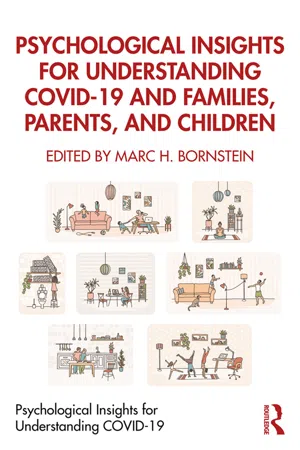The interest in how worry changes across childhood dates back to the earliest studies of worry in children. Writing in 1953 Angelino and Shedd report:
Very broadly and only with reservation can we state that at age 10, 11, and 12 we find a preponderance of fears connected with animals. At 13 we find a shift to school-connected content. At age 15 this content appears to give way to economic and political interest which increases through age 18.
Angelino and Shedd (1953)
Over 60 years later their findings are still relevant and represent a good description of what changes in children’s worry over time. A number of studies have explored changes in children’s worry, and these have used a wide variety of methodologies to determine such changes (see Chapter 1 for a review of these). Some studies have used lists of worries generated from pilot work and asked children to rate them on frequency and intensity (e.g. Brown et al., 2006). Others have used semi-structured interviews which combine open-ended questions with structured prompting about specific worries (e.g. Henker, Whalen, & O’Neil, 1995; Laing et al., 2009; Muris et al., 2000; Silverman, Greca, & Wasserstein, 1995). Only a small number of studies have used formal questionnaires of worry or worry processes to look at developmental changes (e.g. Barahmand, 2008; Chorpita et al., 1997; Pasarelu et al., 2017). From these studies it appears that there is some evidence that worry frequency increases to age ten (Caes et al., 2016; Muris, Merckelbach et al., 2000; Muris, Merckelbach, Meesters, et al., 2002) and then declines after that (Caes et al., 2016; Laing et al., 2009), but that the intensity of worries declines more in mid-childhood and increases after that (Caes et al., 2016; Silverman, Greca, & Wasserstein, 1995). However, the evidence isn’t strong and with such varied methodologies, respondents, and age ranges it is hard to strongly support the idea of developmental changes in the frequency and intensity of worries (Cartwright-Hatton, 2006).
What is much clearer is that, as suggested by Angelino and Shedd, the content of children’s worries changes over time. In young children the predominant worries, just like predominant fears, are physical and immediate. These include worries about animals, separation from parents, and bullying (Laing et al., 2009; Muris, Merckelbach, et al., 2000; Stevenson-Hinde & Shouldice, 1995). At older ages children become more worried about school, health, physical appearance, and personal harm (Brown et al., 2006; Caes et al., 2016; Henker, Whalen, & O’Neil, 1995; Muris, Merckelbach, et al., 2000), with only the oldest children worrying about social ills (Angelino & Shedd, 1953; Henker, Whalen, & O’Neil, 1995).
Alongside this development in the content of worry is development in children’s ability to describe their worries with greater elaboration (Henker, Whalen, & O’Neil, 1995). Indeed, given the development of language and introspective capacity across childhood it is difficult to determine whether it is the experience of worry that changes or the ability to talk about it. Furthermore, given that worry is defined as primarily verbal it is difficult to determine whether it is increased language and cognitive ability that opens up the ability to think and therefore worry about different topics or whether the developmental shifts in the content of worry reflect children’s widening experience of the world (Muris, Merckelbach, Meesters, et al., 2002). Given that many of our interventions for anxious and worried children are predominantly verbal exploring the inter-relationships between language development and worry development may be important. Examining whether there are developmental shifts in the components of worry and processes involved in worry may also help us understand whether the adult models of worry do really help us understand worry in children.
Another aspect of children’s experience that is likely to impact the content of their worries is their cultural context. Several studies have concluded that anxiety symptoms in children do differ across different cultures (Essau et al., 2004; Silverman, Greca, & Wasserstein, 1995; Varela et al., 2008), with differences found in which anxiety disorders are most prevalent, which fear is most commonly reported, and which wider anxiety symptoms are reported. These of course represent different aspects of the experience of anxiety; the reporting, and even experiencing, of different symptoms is likely to be influenced by the social desirability of such symptoms in your society, with somatic symptoms being more socially accepted than emotional symptoms in some families and in some societies (e.g. Varela & Hensley-Maloney, 2009). The prevalence of individual worries also likely represents individual children’s experiences. If you live in poverty with uncertain access to food and shelter, then your worries are more likely to be about hunger and safety. Whereas if you are wealthy and not living in precarious circumstances, your worries are more likely to be about friendships, school, and achievement. What appears to be the case, however, is that there are more differences between individuals in different cultures than there are between cultures. Furthermore, the content of worry does not appear to determine strongly whether it is becomes a problem. Chapter 4 will further review cross-cultural differences in the mechanisms involved in problematic worry.

